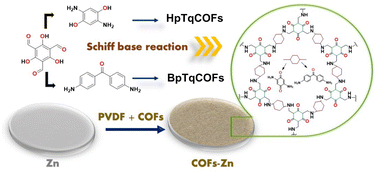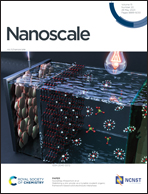Stabilizing a zinc anode via a tunable covalent organic framework-based solid electrolyte interphase†
Abstract
Zinc (Zn) is an excellent material for use as an anode for rechargeable batteries in water-based electrolytes. Nevertheless, the high activity of water leads to Zn corrosion and hydrogen evolution, along with the formation of dendrites on the Zn surface during repeated charge–discharge (CD) cycles. To protect the Zn anode and limit parasitic side reactions, an artificial solid electrolyte interphase (ASEI) protective layer is an effective strategy. Herein, an ASEI made of a covalent organic framework (COFs: HqTp and BpTp) was fabricated on the surface of a Zn anode via Schiff base reactions of aldehyde and amine linkers. It is seen that COFs can regulate the Zn-ion flux, resulting in dendritic-free Zn. COFs can also mitigate the formation of an irreversible passive layer and the hydrogen evolution reaction (HER). Zn plating/stripping tests using a symmetrical cell suggest that HqTpCOF@Zn shows superior stability and greater coulombic efficiency (CE) compared to bare Zn. The full cell having COFs@Zn also displays much improved cyclability. As a result, the COF proves to be a promising ASEI material to enhance the stability of the Zn anode in aqueous media.

- This article is part of the themed collections: Nanoscale Most Popular 2023 Articles and 2024 Lunar New Year Collection


 Please wait while we load your content...
Please wait while we load your content...